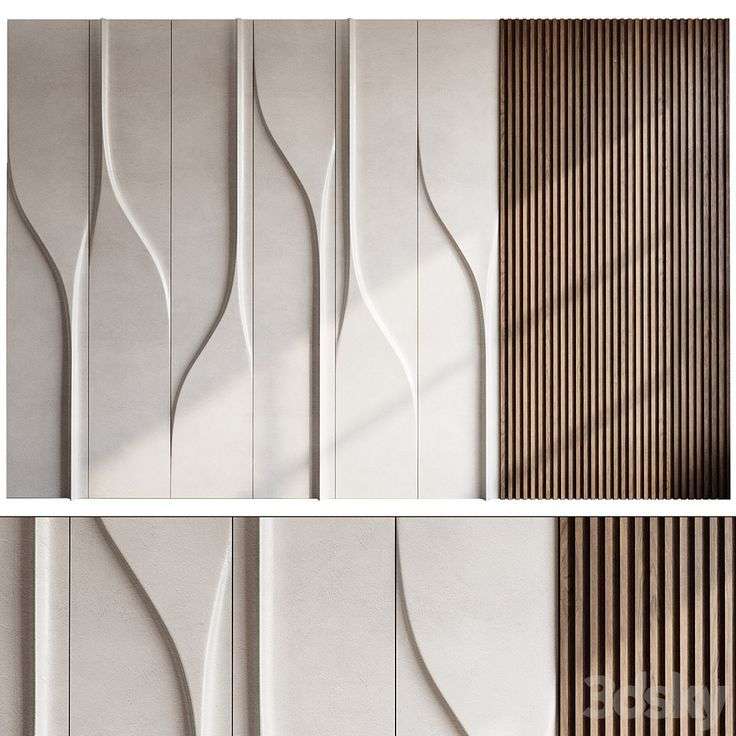In interior design, shapes play a crucial role in shaping the mood and feel of a space. Every curve, angle, and form influences how we experience a room, both consciously and subconsciously. Understanding the psychology behind shapes in interior design allows you to create spaces that evoke specific emotions, enhance functionality, and contribute to a harmonious atmosphere.
At Scale & Structure, we believe that thoughtful shape choices can transform any room. In this blog, we’ll dive into how different shapes affect our perception of space and how you can use them to create the ideal ambiance in your home.

1. The Power of Circles: Unity, Comfort, and Flow
Why it works: Circles are often associated with feelings of unity, completeness, and warmth. They have no sharp edges or corners, creating a sense of calm and balance.
Psychological Impact:
- Softness and approachability: Circular shapes are inviting and non-threatening, which makes them ideal for spaces meant to be relaxing or intimate, such as bedrooms or living rooms.
- Unity and connection: In rooms where people gather, such as dining rooms or lounges, circular furniture like tables or rugs can encourage interaction and conversation.
Scale & Structure Tip: Incorporate round elements like tables, mirrors, or light fixtures to create a welcoming environment. Circular rugs can help define a space and promote a sense of harmony.
2. Squares and Rectangles: Stability, Order, and Strength
Why it works: Squares and rectangles are stable shapes that convey a sense of structure and order. They are the most common shapes found in furniture, architecture, and room layouts, providing a foundation for a well-organized space.
Psychological Impact:
- Stability and balance: Rectangular and square shapes are predictable and reliable, which can make a space feel grounded and organized.
- Functionality and efficiency: These shapes make the best use of space and are ideal for maximizing room layout. They create clean lines and a sense of balance that works well in both modern and traditional settings.
Scale & Structure Tip: Use square or rectangular furniture—such as sofas, bookshelves, and coffee tables—to create a solid, balanced foundation for your room design. To add variety, combine these shapes with softer, more organic forms.
3. Triangles: Energy, Direction, and Focus
Why it works: Triangular shapes are dynamic and directional. They naturally draw the eye upward or toward specific focal points, making them ideal for creating visual interest and energy within a room.
Psychological Impact:
- Movement and focus: Triangles create a sense of motion and direction, often used to guide the viewer’s eye toward a particular feature of the room, such as artwork, a fireplace, or a window.
- Stimulation and excitement: Triangular shapes are associated with action and excitement, which is why they are often used in high-energy spaces like home offices or living rooms.
Scale & Structure Tip: Incorporate triangular designs through artwork, furniture angles, or architectural details like pitched ceilings. To prevent the space from feeling too chaotic, balance triangular elements with calming shapes like circles or rectangles.
4. Organic and Curved Shapes: Comfort, Flexibility, and Flow
Why it works: Curved and organic shapes—such as those found in nature—are often considered more inviting and comfortable. These shapes flow naturally and are less rigid, contributing to a more relaxed, harmonious atmosphere.
Psychological Impact:
- Relaxation and serenity: Curves and flowing lines create a sense of calm and peace. These shapes are often used in areas designed for rest, such as bedrooms or lounges.
- Flexibility and ease: Curved shapes are perfect for creating spaces that feel fluid and flexible, allowing movement to flow seamlessly from one area to another.
Scale & Structure Tip: Add curved furniture pieces, like rounded armchairs, soft-edge tables, or arched doorways, to bring warmth and comfort to your home. Curved rugs or wall features can also help soften hard edges and add a sense of flow.
5. Geometric Shapes: Modernity, Structure, and Precision
Why it works: Geometric shapes, such as hexagons, diamonds, and even abstract forms, can give a room a contemporary and structured feel. They are often used to add a touch of sophistication and order while creating a visually stimulating space.
Psychological Impact:
- Modernity and precision: Geometric shapes exude a sense of precision and structure. They often contribute to a minimalist or modern aesthetic, giving the room a clean, ordered look.
- Visual interest and stimulation: The repetition of geometric patterns or bold geometric shapes can add rhythm and energy to a space, making it feel dynamic and exciting.
Scale & Structure Tip: Incorporate geometric patterns through textiles, such as rugs, throw pillows, and wall art, or through more structural elements like tiles or shelving units. Geometric shapes work well in kitchens, bathrooms, or modern living rooms where you want to create a sleek, contemporary vibe.
6. Organic vs. Man-Made Shapes: Balancing Nature and Structure
Why it works: While man-made, angular shapes (like squares, rectangles, and triangles) bring order and structure, organic shapes—found in nature—inject fluidity and warmth into a space. The balance between the two can create a well-rounded environment that feels both structured and welcoming.
Psychological Impact:
- Contrast and harmony: A balanced mix of organic and geometric shapes can create harmony, while the contrast between them can prevent a room from feeling too rigid or too chaotic.
- Flow and flexibility: This blend of shapes helps design spaces that encourage movement, whether through the layout of furniture, wall features, or the overall flow of a room.
Scale & Structure Tip: In a space, use organic shapes for softer elements, like curtains, throw blankets, or lighting, and combine them with more geometric pieces for furniture or architectural details. The result is a room that feels both organized and inviting.
7. The Role of Symmetry and Asymmetry in Shape Design
Why it works: Shapes don’t always need to be perfectly symmetrical to create a sense of balance. Both symmetry and asymmetry play important roles in interior design, depending on the mood or effect you’re looking to achieve.
Psychological Impact:
- Symmetry: Symmetry creates a sense of order and calm. It’s often used in traditional or formal designs and helps to create a balanced, harmonious space.
- Asymmetry: Asymmetry can bring excitement, energy, and movement to a space. It’s perfect for contemporary or eclectic designs, where you want to avoid feeling overly predictable or stiff.
Scale & Structure Tip: Consider symmetry for more traditional, calming spaces, like dining rooms or bedrooms, while asymmetry can be used in spaces like living rooms or home offices, where creativity and energy are desired.
8. The Importance of Proportions and Scale
Why it works: The proportion and scale of shapes in a room are essential for creating balance and harmony. When furniture and décor are too large or too small in relation to the room, the space can feel off-balance.
Psychological Impact:
- Proper scale: When shapes are properly scaled to the size of the room, they help maintain equilibrium and ensure the space feels comfortable and functional.
- Disproportionate shapes: On the other hand, exaggerated or mismatched proportions can create a sense of unease or discomfort in the space.
Scale & Structure Tip: Pay attention to the proportions of furniture and décor in relation to the room size. Choose pieces that are in harmony with the overall scale of the space to maintain balance and prevent overcrowding.



